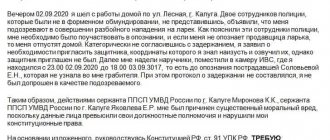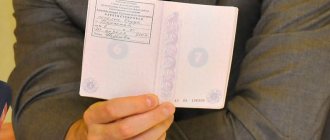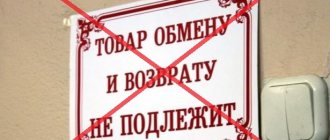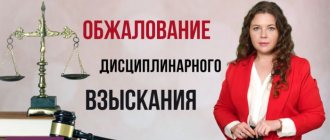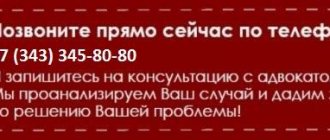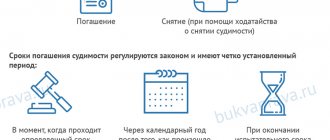Questions about car window tinting are one of the most common. This is logical - drivers who spend a lot of time behind the wheel try to create maximum comfort for themselves, including in the area of protection from external light, prying eyes, etc. At the same time, excessive darkening negatively affects traffic safety and, again, it is logical that the state is trying to prevent this from happening.
On a compromise between these phenomena - safety and the desire to tint the windows - the rules are built, violation of which will lead to a fine, and in some cases, to arrest.
What tinting is acceptable, how a violation is determined and what the fine is for tinting - we will consider these issues in this material.
Is car window tinting allowed in Russia?
There is no complete ban on tinting according to Russian laws. However, shading standards are strictly regulated and have different indicators depending on the type of window. Next, we will consider the rules of tinting that are permitted by law, dividing all car glazing into the following categories:
- Rear window.
- Side rear windows.
- Side front.
- Windshield (windshield).
- Upper colored stripe on the windshield.
The rules will be provided for a standard passenger car, implying that cars with more windows, such as minivans, minibuses, have rear, front and front side windows subject to the same rules, and all others may fall into the "rear side" category.
Where do rumors about the illegality of orders come from?
Internet forums are actively discussing the “illegality of a written demand” after paying a fine. The main argument here is the lack of a corresponding article regarding motorists.
Indeed, a direct indication of the possibility of issuing an “order to eliminate violations” in the administrative code of the Russian Federation is contained in Art. 29.13. This applies only to officials and legal entities, and not to individual citizens. There is also no single approved form for issuing tinting orders to motorists.
The above conditions do not negate the need for ordinary citizens to comply with police demands if they are guilty of violating established rules. When issuing an order, the traffic police inspector is guided by the Law “On Police”, Article 13, and not by the Administrative Code of the Russian Federation.
What tinting is allowed according to GOST?
“Habit is second nature,” says popular wisdom, and in the case of tinting this is further confirmed. It is out of habit that the word “GOST” is often used colloquially when speaking about a document regulating these standards. However, for several years now, the rules in this area have been established by a different type of regulation.
At the moment, the document that determines the possibility of tinting car windows is the Technical Regulations of the Customs Union “On the Safety of Wheeled Vehicles”, and more precisely – Appendix No. 8 to it, called “Requirements for vehicles in operation”, section 4 which is called “Visibility Requirement” (hereinafter, Requirements), and contains the parameters we need.
At the same time, there is also a current GOST 32565-2013, confirming the same standards, but only within the framework of front-view glass (70%, regardless of the type of glass - tempered or multi-layer). Moreover, this document establishes standards for conducting inspections, so we will return to it later.
What kind of tint do the Requirements allow? Let's look at the categories selected above:
| Glazing category | Tinting standards |
| Rear window | If there are side mirrors - no restrictions (with the exception of mirror tinting - it is prohibited). |
| Side rear windows | |
| Side front | Light transmittance is at least 70%, and in the case of using vehicle reservations - at least 60%. |
| Windshield (windshield), excluding the part indicated below | |
| Top stripe on the windshield (dark, colored, athermal, etc.) | For passenger vehicles - no more than 14 cm (140 mm); for some types of large-capacity vehicles, the width of the strip is allowed to the upper edge of the working area of the windshield wipers. |
8(800)350-23-68
Dmitry Konstantinovich
Expert of the site "Legal Consultant"
Ask a Question
In simple words, car service centers often give the following advice: tint the rear windows as you wish, and on the front windows use a film with a light transmittance of at least 70%. If you follow these tips in practice, you can end up in an unpleasant situation. Everything is correct with the rear ones - it doesn’t matter what they look like, even if they’re completely black. But there is a nuance with the front ones. The fact is that the indicated 70% is the total transmission capacity of the finished window, and the glass initially does not transmit 100% of the light, and over time this figure does not change for the better. If, for example, the glass itself does not transmit at least 1%, then when added to a 70% film, the light transmittance will be 69%, which may be considered a violation and a fine imposed.
Myths and reality about window tinting
First of all, let's focus on two, at first glance, obvious points:
- The inspection by traffic police officers of tinting for compliance with the Requirements must be carried out according to certain rules.
- Failure to comply with these rules will allow you to challenge the fine.
These two points, in principle, contain the main thing why you need to find out the entire verification process - in order to be able to do without a fine. At the same time, the procedure itself, oddly enough given the presence of regulatory documents, contains many harmful myths. Let's start by debunking them.
At what humidity, temperature and atmospheric pressure can tint measurements be taken?
Indeed, in the previously existing GOST standards such parameters mattered and, for example, it was impossible to measure tint in the rain or at night. However, with the adoption of GOST 5727-88 and, accordingly, the cancellation of the previous ones, neither temperature, nor humidity, nor atmospheric pressure are no longer taken into account when measuring . This fact causes a lot of discussion in the legal community, but, nevertheless, the reference to these values has been removed from the current version of GOST.
Interestingly, GOST 5727-88 establishes standards for conducting various tests related to glass, for example, for strength, curvature, etc., but in other cases the parameters of temperature, humidity and pressure are important, namely in the case of light transmission - not.
The parameters of temperature, pressure and humidity are indicated in the documentation for the measuring device - shouldn't they be taken into account?
According to law enforcement practice, in controversial situations, both traffic police officers and the courts place the provisions of GOST higher than the documentation of devices. As a result, referring to GOST, it is argued that the weather conditions of the inspection have not been established and cannot be taken into account.
This is important because inexperienced lawyers or drivers who do not seek the help of professional motor vehicle lawyers often try to build a defense based on the instructions for light transmittance measuring devices.
Is it true that light transmission testing can only be done at stationary traffic police posts?
No it is not true . No longer true. Previously, there actually existed regulatory documentation establishing the mandatory requirement of inspection only at a stationary post, but in the current editions, these norms are absent.
Let’s end the harmful myths here and move on to actual procedural issues.
Conclusion
As a rule, after justifying such factors to the inspector, he rarely continues the debate with you, and in 90% of cases he gives you your rights and goes home hungry.
By the way, also take into account this important fact that measurements should be made exclusively under certain weather conditions (according to GOST 27902: temperature should be in the range from 15 to 25 C, atmospheric pressure from 86 to 106 kPa, relative humidity from forty to 80 %).
And if these conditions are not met, then such measurements will be recognized by the court as incorrect and invalid. And to do this, you just need to get a certificate of temperature on that day. Now, armed with this knowledge, you know what to do if you are stopped for tinting and constantly money-hungry traffic police inspectors are trying to make money on you.
Rules for measuring tint after stopping
Exceeding the glass tinting standards is an administrative offense in accordance with Part 3.1 of Article 12.5 of the Code of Administrative Offenses of the Russian Federation. The standards, in accordance with this article, are the parameters specified in the requirements of the Technical Regulations.
In accordance with this, the registration of an offense occurs according to the norms established by administrative legislation:
- In accordance with Article 23.3 of the Code of Administrative Offenses, control of the technical serviceability of vehicles is assigned to traffic police officials.
- Article 28.3 of the Code of Administrative Offenses establishes that in this case a protocol on an administrative offense must be drawn up.
- Article 26.8 of the Code of Administrative Offenses obliges the traffic police, when using special technical means, to enter their testimony into the protocol.
Based on these and other standards, we can formulate the basic rules for measuring tint, violation of which may become grounds for challenging the decision of a traffic police officer:
- Measurements must be carried out with a certified instrument.
- The device must have timely verification, for which documentation must be available and demonstrated upon request.
- Measurements are carried out at three points, and the final result is their average value.
- Based on the results of the inspection, if a violation is detected, a protocol is drawn up.
- The device readings must be included in the administrative violation report.
8(800)350-23-68
Dmitry Konstantinovich
Expert of the site "Legal Consultant"
Ask a Question
The question often arises of involving witnesses when drawing up a protocol. For this type of violation, witnesses are not needed . Moreover, even if the perpetrator refuses to sign the protocol, on the basis of Part 5 of Article 28.2 of the Code of Administrative Offenses of the Russian Federation, a corresponding note is made about this, but witnesses are not involved.
Rules for determining the degree of tint
The procedure for measuring the degree of light transmission through the side windows of a car has its own characteristics. Necessary conditions for taking measurements:
- Light transmission measurements can only be taken at a stationary traffic police post;
- The devices with which measurements are taken must have appropriate certificates of conformity with the date of the last inspection indicated (that is, the device must be suitable for use). In addition, the device used must be included in the State Register of Devices Allowed for Use in Measuring Light Transmission. Some devices are prohibited from being used at subzero air temperatures outside, that is, in freezing temperatures.
- The measurement must be carried out by a traffic police inspector, provided that the glass is clean and dry.
Simply put, no free-standing traffic police inspector has the right to measure light transmission in rainy weather.
In addition, when carrying out it is necessary to pay attention to the external condition of the device, since some unscrupulous inspectors may stick small pieces of film onto the sensors, which naturally leads to measurements not in favor of the driver. There must also be a seal on the device itself.
But, if the inspector nevertheless made a measurement, then the driver has the right to demand a re-measurement. In this case, a prerequisite is the presence of two witnesses, who must be attracted by the inspector himself. If there is a clear delay in finding witnesses, then you can threaten the inspector with a call to the police, since he is violating the time frame for detaining the car.
Another important nuance: if the inspector made any mistake during the measurement, then you should not point it out to him. It is better to wait for the protocol to be drawn up and make a reference to the mistake made in it. In the future, this fact will help in defending your rights.
What is the penalty for tinting?
Responsibility for tinting is directly stated in Part 3.1 of Article 12.5 of the Code of Administrative Offenses of the Russian Federation - for driving a vehicle with windows whose light transmission violates the Requirements, a fine of 500 rubles. In this case, the traffic police inspector has the right to prohibit further operation of the vehicle until the situation is corrected (cessation of illegal actions/conditions).
Do I need to remove the film on site? A request (order) from a traffic police representative to remove the tint may imply something similar. What happens if you don't fulfill it? A repeated fine for tinting is possible, because... a violation under Part 3.1 of Article 12.5 of the Code of Administrative Offenses will be recorded again. However, this is not the worst thing!
A repeated stop with a tint that violates the Requirements, in the presence of a previously formalized need to dismantle the tint, can be interpreted as a violation of Article 19.3 of the Code of Administrative Offenses of the Russian Federation - disobedience to the lawful order of a police officer (and other officials listed in the article), which leads not only to a fine of 500 – 1000 rubles, but also the possibility of administrative arrest for up to 15 days. At the same time, neither deprivation of rights nor “removal of numbers” is provided for under these articles.
8(800)350-23-68
Dmitry Konstantinovich
Expert of the site "Legal Consultant"
Ask a Question
In accordance with Part 1.3 of Article 32.2 of the Code of Administrative Offenses of the Russian Federation, a fine for a violation under Article 12.5 can be paid with a 50% discount if the money transfer is made within the first 20 days from the date of drawing up the protocol.
How long does it take for a prescription to disappear from the State Traffic Inspectorate database?
As mentioned above, the legality of the requirement itself is in question, since there is no regulatory legal document that would regulate its imposition. Related to this is the problem of the timing of its validity. Nowhere is the exact period specified for how long the order is valid.
There are several versions about this:
- the order is kept in the traffic police database for a year (this is the period during which traffic violations are considered repeated);
- the order is removed from the database after a mark indicating its execution appears (at the same time, the inspector may not put this mark during the inspection);
- the requirement, as well as information about all violations, remains forever in the database.
What to do if you receive a requirement for tinting?
If the driver admits the violation, it is better to get rid of the tint as quickly as possible. Possible problems during re-checking have already been indicated above. If you have been issued a fine for driving with tinting, but there is no agreement, it must be contested, but we will talk about this separately.
The recognized fine must be paid. In situations of uncertainty, monitoring the presence of a resolution can be done using the same methods as for any other violation, including finding out through an online check of fines.
We should not forget that in accordance with Article 4.5 of the Code of Administrative Offenses of the Russian Federation, the statute of limitations (period of liability) for this offense is 2 years.
New measures to combat excessive tinting
The State Duma is actively discussing increasing sanctions for darkening windows and headlights, which do not comply with traffic regulations. A new law is being prepared for adoption, according to which it is planned to significantly increase the fine and tighten other penalties for tinting with inappropriate light transmission. Thus, if all the amendments are adopted, then drivers should prepare for the following penalties:
- A threefold increase in the fine (from 500 to 1,500 rubles) for the first protocol.
- Fivefold increase in the amount of the penalty (from 1,000 to 5,000 rubles) for repeated violation
- Deprivation of a driver's license for a period of two months to six months for the third offense.
At the moment, the new law is only going through the stages of discussion and when it will be adopted (how and whether it will be adopted at all) remains a mystery. As mentioned earlier, as of July 1, 2018, the fine for tinting remains the same.

